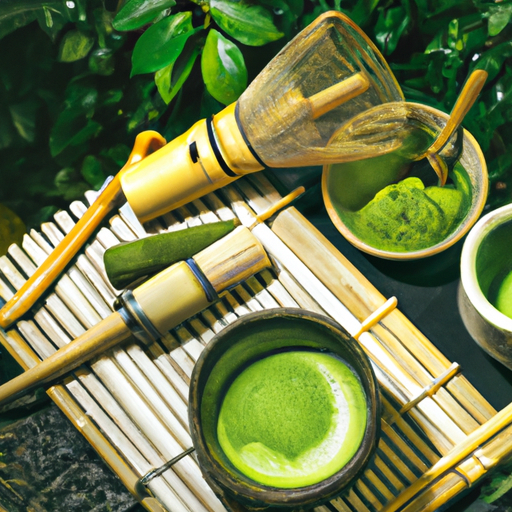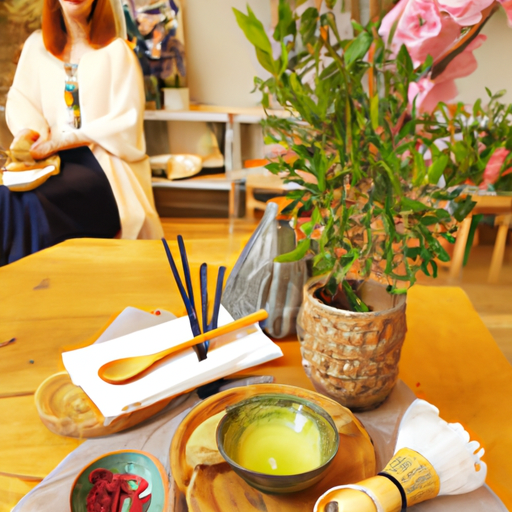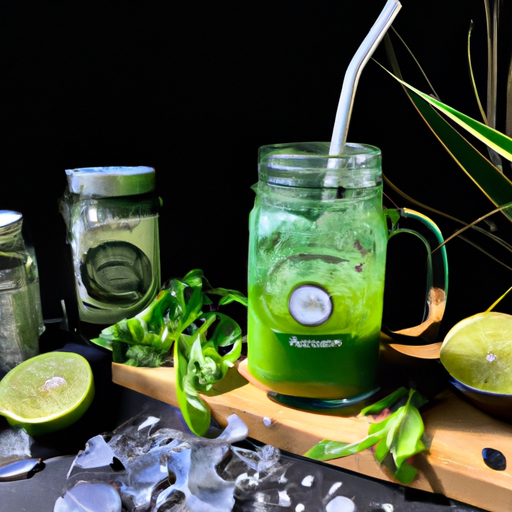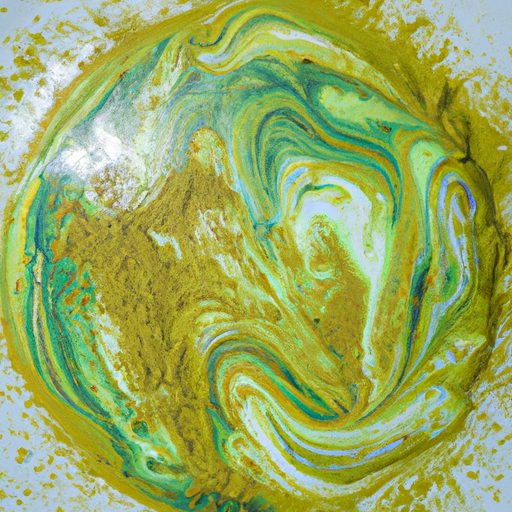Have you ever pondered where you can find the finest matcha? Being a fan of tea and a devoted follower of matcha, my quest to discover the top locations to buy this brightly colored green powder has taken me to various places. With its growing popularity thanks to its health advantages and flavorful profile, matcha has captured the attention of many. However, the abundance of choices can make it daunting to figure out where to begin.
In this article, I will share my knowledge and experience on where to buy matcha. I will cover the different grades of matcha, online retailers, local specialty stores, and even matcha subscription services. Additionally, I will provide recommendations from tea experts and share some delicious matcha recipes to try.
Whether you’re a seasoned matcha drinker or a curious beginner, this guide will help you navigate the world of matcha and find the best source for your needs.
Key Takeaways
- Jade Leaf and Aiya are two great options for high-quality matcha.
- Look for certifications such as USDA Organic or Rainforest Alliance to indicate quality.
- Shade-grown matcha produces a richer flavor and higher nutrient content.
- When purchasing matcha, consider factors such as recyclable/biodegradable packaging and fair trade/ethical labor practices.
Understanding the Different Grades of Matcha
If you’re a matcha lover, you need to know the different grades of matcha and why they matter! Matcha is a type of powdered green tea that’s been used in traditional Japanese tea ceremonies for centuries.
It’s made from the leaves of shade-grown tea plants, which are carefully harvested and then ground into a fine powder. Matcha cultivation and production process can greatly affect the quality of the tea.
The highest grade of matcha is called ceremonial grade, which is made from the youngest leaves of the tea plant. These leaves are carefully shaded for several weeks before being picked, which allows them to develop a rich, complex flavor. The leaves are then carefully processed and ground into a fine powder, resulting in a bright green tea with a smooth, slightly sweet taste.
Different types of matcha are used in various tea ceremonies, each with its own unique flavor and aroma. The most common type of matcha used in traditional Japanese tea ceremonies is usucha, which is a thinner, lighter tea that’s often served with sweets. Another type of matcha, called koicha, is a thicker, stronger tea that’s typically served without sweets.
Understanding these different grades and types of matcha can help you choose the right matcha for your needs. Now that you know about the different grades and types of matcha, you’re ready to start shopping for your own!
There are many online retailers that specialize in high-quality matcha, so you can easily find the perfect tea for your needs. Whether you’re looking for a ceremonial-grade matcha for special occasions or a more affordable option for everyday use, there’s a matcha out there that’s perfect for you.
Online Retailers
One of the best places to snag some matcha is from online retailers who offer a plethora of options and flavors to choose from. When buying matcha online, it’s important to consider the quality of the product and the pricing comparison between different retailers.
Some online retailers offer matcha at a higher price point, but the quality of their products is worth the investment. It’s important to read reviews and do some research before making a purchase to ensure that you’re getting the best quality matcha for your money.
When it comes to matcha quality, some online retailers offer ceremonial grade matcha, which is the highest quality matcha available. Ceremonial grade matcha is made from the youngest leaves of the tea plant and is ground into a fine powder, resulting in a vibrant green color and a smooth, creamy flavor. However, this quality of matcha can come at a higher price point. It’s important to compare prices between different retailers to find the best deal on high-quality matcha.
In addition to quality, pricing comparison is another important factor to consider when buying matcha online. Some retailers offer matcha at a lower price point, but the quality of their products may not be as high. It’s important to read reviews and do some research to ensure that you’re getting the best value for your money. On the other hand, some retailers may offer matcha at a higher price point, but the quality of their products is worth the investment. Ultimately, it’s up to the individual to decide which factors are most important when making a purchase.
While online retailers offer a wide variety of matcha options, there are also local specialty stores that offer unique blends and flavors of matcha. Transitioning into the subsequent section, it’s worth exploring these local stores to find a unique matcha experience that can’t be found online.
Local Specialty Stores
You can discover a whole new world of matcha by exploring local specialty stores, where unique blends and flavors are waiting to be discovered. Not only is local sourcing better for the environment, but it also supports small businesses in your community. When looking for a local store, be sure to do some price comparison beforehand to ensure you’re getting the best deal.
One benefit of shopping at a local specialty store is the ability to sample different varieties of matcha before committing to a purchase. The employees at these stores are often knowledgeable about the products they sell and can offer recommendations based on your preferences. Additionally, many stores carry accessories such as matcha whisks and bowls, allowing you to fully immerse yourself in the matcha experience.
While online retailers may offer convenience, shopping locally allows you to support your community and discover unique blends that may not be available online. However, if local stores are scarce or don’t offer the specific type of matcha you’re looking for, subscription services are a great alternative. These services offer the convenience of online shopping while providing a curated selection of high-quality matcha delivered straight to your doorstep.
Matcha Subscription Services
By subscribing to a matcha service, you’ll not only receive a monthly dose of deliciousness, but you’ll also be supporting small businesses and indulging in a luxurious self-care routine.
Matcha delivery options vary, but most subscription services offer a range of options for you to choose from. Some services provide matcha powder only, while others offer a variety of matcha blends and accessories.
When choosing the right matcha for your taste preferences, it’s important to consider the quality of the matcha. Look for matcha that’s shade-grown and harvested in the spring. This ensures that the matcha is fresh and has a vibrant green color. Matcha from Japan is considered to be the best, as it’s the birthplace of matcha and has the optimal climate and soil conditions for growing high-quality matcha.
In addition to quality, consider the type of matcha you prefer. Do you like a strong, bold matcha flavor or a more mild and creamy taste? Matcha subscription services often offer a variety of blends that cater to different taste preferences. By trying different blends, you can discover your favorite type of matcha.
With so many options available, it’s easy to find a matcha service that suits your needs and taste preferences. When it comes to matcha brands to look out for, there are many reputable companies that offer high-quality matcha. Some popular brands include Ippodo Tea Co., Mizuba Tea Co., and Aiya America. These companies offer a range of matcha options, from traditional to flavored blends. By exploring different matcha brands, you can find the perfect matcha for your taste buds.
Matcha Brands to Look Out For
When it comes to matcha brands, there are a few that I always look out for.
Encha is one of my favorites, offering high-quality matcha sourced from sustainable farms in Japan.
Jade Leaf is another great option, known for their organic and affordable matcha products.
Aiya is also a reliable choice, with a long history of producing premium matcha.
Lastly, DoMatcha offers a range of matcha options, all of which are sourced from small family farms in Japan.
Encha
If you’re looking for high-quality matcha, Encha is a great option. Not only is it certified organic, but it’s also sustainably sourced from Uji, Japan, known for producing some of the best matcha in the world. Encha carefully selects only the best tea leaves, which are then stone-ground into a fine powder.
The result is a vibrant green color and a smooth, mellow flavor that is perfect for drinking on its own or for use in recipes. Encha is also packed with all the benefits of matcha. It contains high levels of antioxidants, which help protect against free radicals and reduce the risk of chronic diseases.
Matcha is also known for its calming effects, thanks to the amino acid L-theanine, which promotes relaxation without drowsiness. With Encha, you can enjoy all of these benefits while also supporting sustainable and ethical matcha production.
Moving on to the next section, Jade Leaf is another brand worth checking out for those looking to buy matcha.
Jade Leaf
You’ll be blown away by the quality of Jade Leaf’s matcha, which has been compared to a refreshing breeze on a hot summer day. I personally love how smooth and creamy it is, with a delicate sweetness that lingers on the palate. The color is a vibrant green, which is a great indicator of its freshness and high quality.
Aside from its delicious taste, Jade Leaf matcha also has numerous health benefits. It’s packed with antioxidants, which can help protect your body from damage caused by free radicals. Additionally, matcha contains caffeine, which can provide an energy boost without the jitters that coffee sometimes causes.
If you’re looking for ways to incorporate matcha into your daily routine, Jade Leaf’s website has a wide variety of matcha recipes that are easy to follow and delicious.
As for the next step, let’s talk about Aiya, another great option for purchasing high quality matcha.
Aiya
You can truly taste the care and expertise that goes into each batch of Aiya matcha, leaving you feeling energized and revitalized with every sip. As a consumer, it’s important to know where your matcha comes from and how it’s produced.
Aiya takes pride in their matcha farming practices, ensuring that their tea leaves are grown in a sustainable way. Here are some things to consider when looking for sustainable matcha production:
- Look for matcha that’s shade-grown, which allows the tea leaves to produce more chlorophyll, resulting in a richer flavor and higher nutrient content.
- Check the packaging to see if it’s recyclable or biodegradable.
- Consider purchasing from companies that prioritize fair trade and ethical labor practices.
- Research the company’s overall sustainability efforts, such as reducing carbon emissions or investing in renewable energy.
- Look for certifications such as USDA Organic or Rainforest Alliance, which indicate that the matcha has been produced using sustainable methods.
Moving on to the next subtopic, let’s talk about domatcha and their commitment to producing high-quality matcha.
DoMatcha
When it comes to finding a matcha brand that values quality and sustainability, you can trust DoMatcha to deliver on both fronts. DoMatcha is committed to sourcing their matcha from sustainable farms in Japan, ensuring that their products are not only of the highest quality but are also environmentally responsible. Their matcha is grown using traditional and sustainable farming methods, which not only benefit the environment but also result in a superior taste and aroma.
If you’re looking for matcha that is perfect for ceremonial use, look no further than DoMatcha. They offer a range of ceremonial grade matcha that is ideal for traditional tea ceremonies. Their matcha is carefully handpicked and stone-ground, resulting in a fine and smooth powder that is perfect for whisking. Whether you’re a tea enthusiast or a beginner, DoMatcha’s products are sure to satisfy your taste buds and provide an authentic matcha experience.
Moving on to the next section, let’s take a look at the recommendations from tea experts.
Recommendations from Tea Experts
If you’re looking for matcha, let the tea experts guide you to the best places to buy it. As a tea enthusiast myself, I highly recommend checking out some of these top-rated matcha brands.
First on the list is Ippodo Tea Co. This Japanese brand has been around for over three centuries and is known for its high-quality matcha. Their tasting notes range from rich and earthy to delicate and floral, and their brewing methods are steeped in tradition. Ippodo also offers a variety of matcha grades, so you can choose the perfect one for your preferences.
Next up is Teavana, a popular tea retailer in the US. While they offer a range of tea blends, their matcha is a standout product. Teavana’s matcha is sourced from Japan and has a smooth, creamy texture with a sweet finish. They also have a range of matcha accessories, including bamboo whisks and ceramic bowls, to help you prepare the perfect cup. If you’re new to matcha, Teavana is a great place to start.
Last but not least, we have Matchaful, a Brooklyn-based brand that sources its matcha directly from Japanese farms. Matchaful prides itself on its commitment to sustainability and transparency in the sourcing process. Their matcha is full-bodied with a slightly bitter finish, and they offer a range of grades to suit your taste. In addition to their high-quality matcha, Matchaful also offers a range of matcha-based products, including lattes and energy bars.
Now that we’ve covered some of the best places to buy matcha, let’s move on to our next section: matcha recipes to try.
Matcha Recipes to Try
Indulging in delicious and unique matcha recipes is a great way to elevate your tea experience and try something new. One of my favorite ways to enjoy matcha is in a creamy and frothy matcha latte. To make this drink, simply whisk together matcha powder, hot water, and your choice of milk (oat milk works particularly well) until frothy. Add a bit of honey or agave for sweetness, if desired.
Another tasty option is a matcha smoothie. This refreshing drink is perfect for a hot summer day or as a post-workout snack. Blend together matcha powder, frozen banana, spinach, and almond milk for a nutritious and energizing drink. You can also add in other fruits, such as pineapple or mango, for added sweetness.
To give you some inspiration for matcha recipes, here’s a table of some popular options:
| Recipe | Ingredients |
|---|---|
| Matcha latte | Matcha powder, hot water, milk, honey or agave |
| Matcha smoothie | Matcha powder, frozen banana, spinach, almond milk, optional fruits |
When making matcha recipes, it’s important to use high-quality matcha powder for the best flavor and health benefits. Additionally, matcha should be stored properly to maintain its freshness. In the next section, I’ll share some tips for storing matcha to ensure that it stays fresh and flavorful.
Tips for Storing Matcha
To keep your matcha fresh and flavorful for longer, it’s like taking care of a delicate flower. Store it in an airtight container in a cool, dry place away from sunlight. Proper storage is crucial to maintain the quality of your matcha powder and extend its shelf life.
Here are three tips for storing matcha:
-
Use an airtight container: Matcha powder is prone to oxidation, which can cause it to lose its color, flavor, and nutrients. To prevent this, store your matcha in an airtight container that seals tightly. This will prevent moisture and air from getting in and damaging your matcha.
-
Keep it in a cool, dry place: Matcha is sensitive to heat and humidity, which can cause it to spoil quickly. To keep your matcha fresh, store it in a cool, dry place away from direct sunlight. Avoid storing it in the fridge or freezer, as this can cause condensation and affect the quality of the powder.
-
Use it within six months: Matcha has a shelf life of about six months from the date of production, so it’s best to use it up before it starts to lose its freshness. If you have a large quantity of matcha, consider dividing it into smaller portions and storing them separately. This will help you use it up before it spoils.
Proper storage is essential to ensure that your matcha stays fresh and flavorful for longer. With these tips, you can maintain the quality of your matcha powder and enjoy its health benefits to the fullest. Speaking of health benefits, let’s now explore the various ways matcha can benefit your body and mind.
Health Benefits of Matcha
Now that we know how to properly store matcha, let’s dive into the health benefits of this beloved Japanese green tea. As someone who drinks matcha regularly, I can attest to its many positive effects on both my physical and mental well-being.
But what exactly makes matcha so special?
To understand the science behind the health benefits of matcha, we first need to explore its history and origins. Matcha has been a staple of Japanese tea ceremonies for centuries, and it’s no wonder why. The tea is made from shade-grown tea leaves that are ground into a fine powder, resulting in a drink that is high in antioxidants, amino acids, and other beneficial compounds.
One of the most notable health benefits of matcha is its ability to boost metabolism and promote weight loss. This is due to the tea’s high concentration of catechins, a type of antioxidant that has been shown to increase fat burning during exercise.
Additionally, matcha has been linked to improved brain function, lower cholesterol levels, and a reduced risk of certain types of cancer. With all of these benefits, it’s no wonder that matcha has become such a popular beverage around the world.
Frequently Asked Questions
What is the history of matcha and how has it evolved over time?
Matcha has a rich and fascinating history that dates back to the Tang Dynasty in China. It was introduced to Japan in the 12th century by Buddhist monks who used it as a meditative aid.
Matcha cultivation has since been refined and perfected, with the tea leaves being grown under shade to increase chlorophyll production and enhance the flavor. Ceremonial matcha preparations are a significant part of Japanese culture and involve a meticulous process of grinding the leaves into a fine powder and whisking it with hot water.
Over time, matcha has evolved from being exclusively consumed by the elite to becoming a popular beverage worldwide due to its numerous health benefits and unique taste profile.
What are some common myths or misconceptions about matcha?
Oh boy, let me tell you about some of the Matcha myths I’ve heard over the years.
Some people think that it’s just a fancy type of green tea, but let me tell you, it’s so much more than that.
Others believe that it’s just a trendy health drink with no real benefits, but that couldn’t be further from the truth.
Matcha is packed with antioxidants, vitamins, and minerals that can help boost your metabolism, improve brain function, and even reduce the risk of certain types of cancer.
And don’t even get me started on the misconception that it’s difficult to prepare or that it tastes bitter.
With the right tools and techniques, it’s actually quite easy to make a delicious cup of Matcha that’s smooth, creamy, and bursting with flavor.
So there you have it – Matcha myths, debunked.
And if you’re wondering where to buy Matcha, there are plenty of reputable online stores and specialty shops that offer high-quality products.
Can matcha be used in baking or cooking, and if so, what are some recipes to try?
I absolutely love using matcha in my baking and cooking! Not only does it add a unique, earthy flavor to any dish, but it also has numerous health benefits.
Matcha is packed with antioxidants, can boost metabolism, and even has calming effects.
Some of my favorite matcha recipes include matcha latte cupcakes, matcha white chocolate cookies, and matcha smoothie bowls.
For the cupcakes and cookies, I simply add matcha powder to the batter and frosting/icing for a beautiful green color and delicious taste.
For the smoothie bowls, I blend together frozen bananas, almond milk, and matcha powder for a refreshing and energizing breakfast or snack.
With all of these tasty and nutritious options, it’s no wonder matcha has become such a popular ingredient in the culinary world.
Are there any cultural or ceremonial traditions associated with matcha consumption?
Ceremonial traditions play a significant role in matcha consumption. In Japan, the preparation and drinking of matcha is considered a form of art and is often incorporated into traditional tea ceremonies.
The process involves carefully whisking the powdered tea with hot water until a frothy consistency is achieved. The resulting beverage is then served in a special bowl and enjoyed slowly, often accompanied by sweet treats.
In addition to its cultural significance, matcha also boasts numerous health benefits. This powdered green tea is packed with antioxidants, vitamins, and minerals that can help boost metabolism, reduce inflammation, and improve overall well-being.
So, whether you’re looking to experience the beauty of a matcha ceremony or simply reap its health benefits, incorporating this superfood into your routine is a wise decision.
How does the quality of matcha affect its taste and health benefits, and what should consumers look for when purchasing matcha?
When it comes to matcha, the quality of the tea can greatly affect both its taste and health benefits. Matcha is typically graded based on its quality, with higher grades containing more tender leaves and being grown using more traditional cultivation techniques.
These higher grades of matcha tend to have a smoother, sweeter taste and a richer, more vibrant green color. In terms of health benefits, higher grades of matcha contain more antioxidants and amino acids, which are believed to have a variety of health benefits.
When purchasing matcha, consumers should look for higher grades that are grown using traditional cultivation techniques, such as shading the tea plants before harvest. This will ensure a higher quality product with a more robust taste and greater health benefits.
Conclusion
So there you have it, folks! Whether you’re a seasoned matcha connoisseur or just starting out on your journey, there are plenty of options available for purchasing high-quality matcha.
From online retailers to local specialty stores, to matcha subscription services, there’s something for everyone.
But I know what some of you may be thinking: "Isn’t matcha expensive?"And while it’s true that some higher grades of matcha can come with a higher price tag, there are also many affordable options available that still offer great quality and taste.
And when you consider the numerous health benefits that come with drinking matcha, it’s definitely worth the investment.
So don’t be afraid to explore and try out different brands and grades of matcha, experiment with recipes, and enjoy all the wonderful benefits that this amazing green tea has to offer.
Cheers to your matcha journey!










